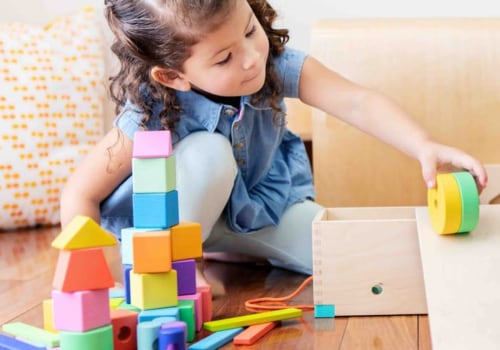As a child health expert and professor at the University of California's Berkeley School of Public Health, I am often asked about the best way to clean and disinfect children's toys. With the constant exposure to germs and bacteria, it's important to regularly clean and disinfect your child's toys to prevent the spread of illness. One effective and natural method is soaking toys in vinegar. To begin, fill a sink with cold water and add about ½ cup of white vinegar.
Soaking the toys in cold water will help prevent the smell of vinegar from spreading throughout the room. Vinegar is a natural cleaner and disinfectant, making it an excellent alternative to bleach. Mix 1 gallon of water with ½ cup of white vinegar and allow the toys to soak in this solution for about an hour. Once the toys have soaked, gently rub off any mold or dirt that has loosened. Then, let the toys dry completely before putting them back in their designated storage area.
If there is still a lingering smell of vinegar, simply lift the toys out of the solution and dry them before returning them to their place. This solution is not only environmentally friendly, but it has also been proven to effectively clean and disinfect toys that are not dishwasher safe. If you have wooden toys, it's important to take extra care when cleaning them. Create a solution of 50% vinegar and 50% water, dip a kitchen towel into the mixture, and use it to wipe down the wooden toys. Avoid submerging wooden toys in water as it may cause them to become deformed or rough. Vinegar can also be used to clean stains from cloth and plastic toys.
Bath toys, with their squeeze holes that collect stagnant water, are especially prone to mold growth. According to Karen Sokal-Gutierrez, it's a good idea to clean children's toys regularly, about once a month. Once you have thoroughly cleaned and disinfected your child's bath toys, it's important to take steps to prevent mold and mildew from growing again. After each use, make sure to turn off and disconnect the toy or remove the batteries (but remember to replace the battery compartment cover). If you wash wooden toys in the sink, be sure to dry them immediately after washing to avoid any damage to the wood. Children's toys come in all shapes and sizes, from simple rattles to battery-operated toys with lights and sounds.
If a toy is exceptionally dirty or stained, you can use a cleaning solution made with soap instead of running water. Gently rub the toy with a washcloth and then squeeze out any excess water from inside the toy. Rinse off the outside of the toy and let it dry completely before giving it back to your child. Since bath toys often go directly into a child's mouth, it's crucial to keep them as clean as possible. Regularly disinfecting them is key.
If your bath toys have holes for spraying water, make sure to fill them with bleach water while they are soaking. Now that you know how to effectively clean and disinfect your child's toys, it's important to make it a regular practice. While it may be impossible to completely eliminate germs, regularly cleaning and disinfecting your child's toys will help keep them as clean as possible. And if you ever forget to clean a toy or want to ensure its safety, simply boil it in hot water and use tweezers to remove any dirt or grime from inside. Molly Maid does not offer a toy cleaning service, but there are some tips you can follow to keep your child's toys germ-free and ready to play. One option is to use SafeSpace Disinfectant & Deodorizing Spray, an EPA-approved ultra-fine disinfectant that leaves no residue on toys and is not toxic if ingested by children.
However, this method is not suitable for stuffed animals or plush toys.



